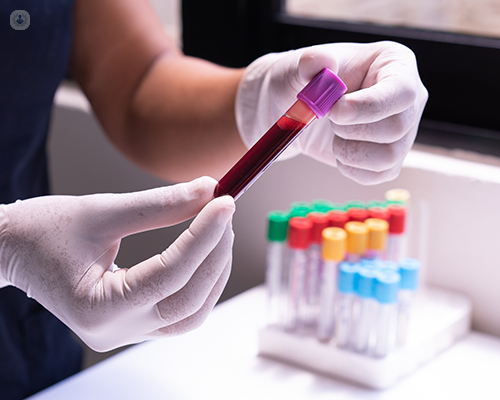Blood culture
What is analysed?
A blood culture is performed to detect the presence of microorganisms such as bacteria, yeast (a type of fungus), or viruses in the blood, that may be causing bloodstream infections.
Normally, infections originate from a specific site within the body. If the immune defences and white blood cells fail to contain the infection at its source, the microorganisms responsible for the infection might enter the bloodstream, allowing the spread of the infection throughout the body. The localised infection becomes a systemic infection.
Systemic infections can cause widespread inflammation and symptoms that affect multiple organs of the body, a condition referred to as sepsis.

What does the result mean?
The result indicates whether microorganisms have grown in the blood sample, showing the presence or absence of bloodstream infections.
Positive cultures suggest the presence of bloodstream infection, while negative cultures indicate the absence of significant microbial growth.
Why conduct the analysis?
A blood culture is conducted to detect the presence of a systemic infection.
When to conduct the analysis?
A blood culture is conducted when symptoms of sepsis are observed, such as fever, nausea, confusion, or tiredness. These symptoms may have developed during another infection, for example pneumonia or a urinary tract infection (UTI).
What sample is required?
Two or more blood samples are required. These samples should have been taken from separate sites, usually veins in the arm.
Is any prior preparation necessary?
No prior preparation is necessary.
How is it performed?
The blood samples are collected into sterile containers which contain a solution that supports the growth of microorganisms such as bacteria and yeast. The culture bottles are then placed in a controlled environment, such as an incubator, where they are monitored for microbial growth over a specified period (usually 24-48 hours). If microorganisms are present in the blood sample, they will multiply and cause visible changes in the culture media, indicating a positive result.
What are the normal values?
The result of a blood culture is qualitative, indicating only either positive (microbial growth) or negative (no significant microbial growth).
What does having altered values mean?
- Positive blood culture: Indicates the presence of microorganisms in the bloodstream, suggesting a bloodstream infection. Further testing, such as antimicrobial susceptibility testing, will be performed to guide appropriate antibiotic therapy.
- Negative blood culture: Indicates the absence of significant microbial growth in the blood sample. However, it doesn’t completely rule out the possibility of infection, as some microorganisms may not grow in standard culture conditions or may be present in low numbers.